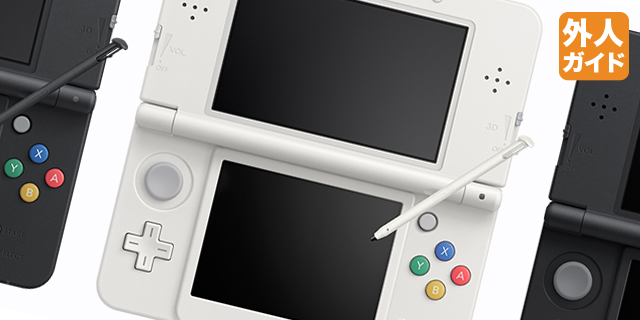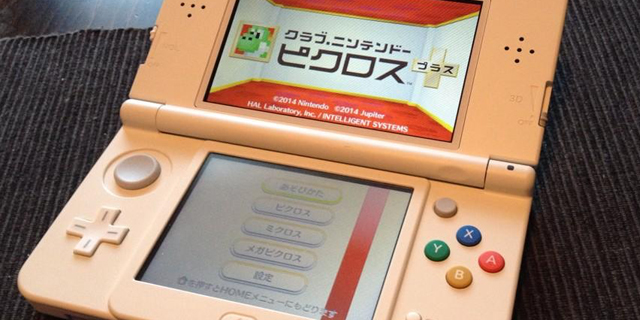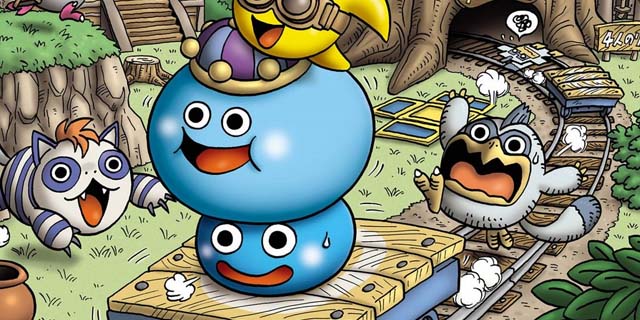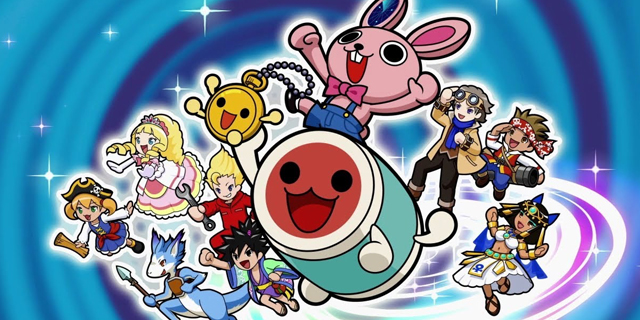
Whether you’re enticed by the idea of getting a New 3DS before the North American launch or you want to use the transition to snag an older model for cheap, it’s an intriguing time to jump into the world of 3DS imports. Sadly, it’s not region-free, but if you take the plunge on the hardware, there are a lot of compelling Japan-only experiences to try, even if you don’t know the language!
Before we jump in, a few helpful things to know about 3DS importing:
North American accessories work. This is most helpful to know because many Japanese systems don’t come with AC adapters, and while Japanese power cords do actually work over here (though not always vice-versa), you can just charge with the one you’re using for your U.S. system. And anything else you need doesn’t need to suffer the import markup, either.
Your credit cards totally work on the eShop. While the process of navigating the store in Japanese may take some getting used to, you don’t actually need to pay for expensive eShop credit codes. Your bank will charge a foreign transaction fee, but it’s usually around three percent — significantly less than the import-code premium.
You can’t change the system language to English, but there’s a trick to navigating the interface. The benefit of owning a 3DS from both regions is that you can place them side-by-side and navigate menus and settings at the same time, reading the English screen and making the corresponding adjustments on the Japanese one. Rarely are the prompts different between regions.
Now, to the games!

Club Nintendo Picross/Club Nintendo Picross Plus
In the West, we’ve had no shortage of opportunities to experience the joy that is Picross, from the retail Picross DS to the many Picross e 3DS eShop releases. Still, there’s something cool about an entry that infuses the puzzle gameplay with Nintendo franchises. These two releases, available through the Japanese Club Nintendo (or elsewhere, if you know where to look), play around with 8-bit sprite art while also providing just the kind of thought-heavy fun you want from any Picross game. (And the beauty of Picross: once you know how to play, no language barrier can stop you.)
Daigasso! Band Brothers P
Nintendo’s Daigasso! Band Brothers series, known in its one Western (PAL-only) release as Jam with the Band, is a robust music-playing tool that focuses more on creation and sharing than it does on crafting a game of sorts around these. Never is this more true than with P, with a music selection largely derived from downloading what you want through its in-game online song shop. Still, there’s something special about playing all the instruments in the songs in the way the game allows, and the new entry includes something the previous games lacked: a simpler, touch-based scheme that makes the learning curve somewhat less daunting.

Slime Morimori Dragon Quest 3
I’ve written at length about the Rocket Slime series and how its charm just can’t be matched, and the only way to play the franchise’s most recent entry is to import a 3DS. The third game is really the best of the bunch, with a fleshed-out battle scheme, a large world to explore and — oh yeah — pirate ships! You sail around a world that’s eerily familiar to Earth but not quite the same, visiting areas, completing quests and generally having fun sailing around and having pirate ship battles. The quests can be a bit difficult to parse (and you could seek online assistance), but 95% of what you’re doing is perfectly fine for those who don’t know Japanese.
Puzzle & Dragons Z
Puzzle & Dragons, the mobile phenomenon, seems like a weird title to flesh out into a full retail product, but Z pretty much nails it. The best way to approach it is to become familiar with the English version of the mobile game first, but once you’re in, the surrounding RPG world is standard in a comforting way. The game has seen a large amount of success in Japan and could be headed for a Western release, but at this point this is the only place to play a deeper, less microtransaction-filled version of a formula that’s dangerously addictive.

Taiko no Tatsujin: Don and Katsu’s Space-Time Adventure!
This game (like its also-good predecessor, Taiko no Tatsujin: Chibi Dragon to Fushigi na Orb) takes the Taiko rhythm game formula and infuses it with a narrative adventure. Music games make a lot of sense on a handheld system with headphones, and they’re also great import targets due to licensing restrictions and a low language barrier. The 3DS Taiko games bring their own sort of charm, though, with light RPG-style trappings surrounding the rhythm and making it more of a cohesive single-player experience.
Bonus: 3DS Virtual Console
In addition to being a great place to play exclusive releases, the 3DS is also an affordable means to enjoy expensive, rare or just plain good import-only retro games. Our top suggestions: Trip World, a rare Sunsoft platformer with a bright, happy feel reminiscent of Kirby but its own set of mechanics; Famicom Wars, the first game in the (Advance) Wars series and a great insight into how the series has evolved; and Joy Mech Fight, a 1993 Famicom release that both maximizes the system’s potential and brings its own spin to the head-to-head fighter. There are more options here, including more Sega 3D Classics and PC Engine (Turbografx-16) titles, so if you pick up an import system, enjoy spending some time browsing the selections.
There’s a lot to enjoy in an import 3DS — much more than just these — but they’re a great place to start for those who don’t necessarily want to overcome the walls of text that come with import JRPGs and adventure games. Hopefully you can pick some of these up and have some fun!



















